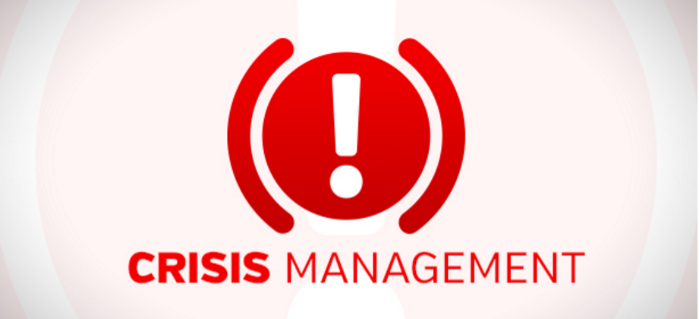Last week, we discussed the importance of reputation management and how risky it can be. Controlling public perception is always important, but it is absolutely crucial in a crisis situation. When something goes wrong in your organization, managing public perception will prevent a simple mistake from becoming catastrophic. Key sectors for crisis management include ethics, quality, safety, and security.
5 Steps for Reputation Management in a Crisis
1. Prepare in advance
In a crisis, every moment can cause severe damage to your organization and its reputation, which is why it’s so important to have plans and strategies before something happens.
Continuously monitor any potential crisis factors and be able to recognize when a situation is about to become more serious. Formalize and practice your crisis response regularly to ensure the organization is ready for any event.
This step will reduce reputational harm, penalties, and recovery time. Finally, be aware that the crisis may not be over when you think it is: even once the initial situation has been resolved, you must be prepared to handle legal, financial, and insurance issues.
2. Have an assigned crisis team
A crucial part of advance preparation is having a crisis team assigned to any likely scenarios. This team must be flexible and adaptive, trained and ready to respond immediately to the situation. They should be able to communicate effectively with both internal and external stakeholders and inspire confidence in the organization.
The team should consist of top-management individuals who the public may view as responsible for the incident; often, it's appropriate to appoint the face of the organization. If necessary, delegate one person from this team to be the head spokesperson for the organization in times of crisis.
Pre-approved statements from your lawyer or legal team are beneficial, as they allow the response team to communicate almost instantly. Any other members of the organization should be instructed to refer any questions to the crisis team, to prevent confusion or misinformation.
3. Focus on effective and quick recovery
The most important aspect of crisis management is quick recovery; you must contain and limit damage as much as possible. Until your organization has resolved the issue, it is impossible to focus on customer reassurance, rebuilding relationships, or resuming normal operations.
The ease with which you respond and recover from the crisis will go a long way in saving your reputation. The crisis is bad enough; you don’t want to be seen as an organization that cannot control or respond to a dangerous situation as well.
4. Use the crisis as a learning opportunity
Once the situation is resolved and has fully passed, use it to prevent a similar incident from happening again. Data analysis can give insight into what caused the failure and insight on mitigation techniques that will prevent it from reoccurring.
Explain to the public what went wrong and how you will fix the issue, re-inspiring confidence in the organization. If you can effectively manage a crisis, you may well survive the turbulent time and come back stronger than ever.
5. Use social media appropriately
In today’s environment, an event can go viral in moments. Control rumours by directing the public to your organization’s official comments on every platform. Don’t waste time trying to target individuals; a simple acknowledgement of the situation and what is being done about it will suffice in the moment of crisis.
Hopefully you’ll never have to use these steps, but failing to prepare for negative situations can be any organization's downfall. By following this guide, your organization should be prepared to handle any crisis, no matter what goes wrong. For more information or advice, ClearRisk would be happy to help! Our risk experts can help you prepare for or respond to a crisis.
If you found this article helpful, you may be interested in:
.png?width=1050&height=450&name=email%20signature%20(4).png)






Your comments are welcome.